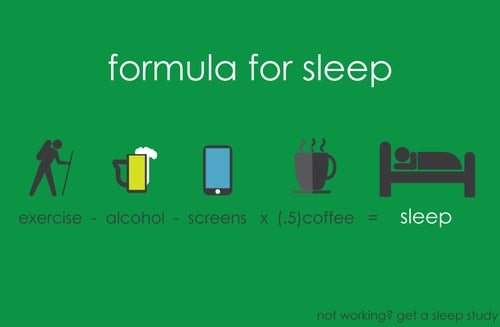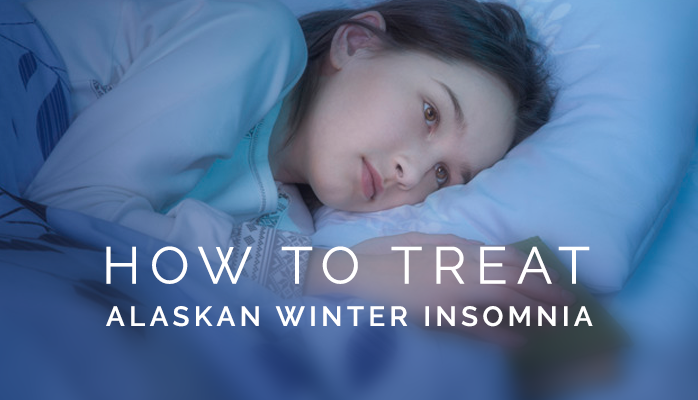Why Alaskan Winter Darkness Can Cause Insomnia
Alaskan winters bring about extreme lighting conditions, with most of the day being shrouded in darkness or completely devoid of sunlight. However, contrary to popular belief, this prolonged darkness does not bode well for our sleep. Adjusting to the Alaskan darkness after our vibrant summers requires significant lifestyle changes, and the natural hormonal fluctuations that occur during these long, dark winters only exacerbate our struggle to achieve restful sleep.
Our lives tend to change in predictable ways during winter, sometimes to the point where, on paper, we look like different people between winter and summer in Alaska. The winters can hit many of us particularly hard:
- Anxiety
- Depression
- Restlessness
- Feelings of isolation
- Low levels of physical activity
- Little time outside
- Hormonal changes
These symptoms often end up either exacerbating or causing sleep disorders, most commonly insomnia. In addition to these natural responses to the darkness, our melatonin regulation can also be profoundly changed during all of the darkness.
Melatonin regulates our biological clock. It is produced in response to changes in light. The lack of light changes during winter can throw our melatonin regulation completely off, and in consequence, and combined with other factors, our sleep schedule can become whacky as well – i.e., exhibit or exacerbate classic signs of insomnia:
- Can’t fall asleep
- Can’t sleep until a normal hour in the morning
- Keep waking up throughout the night
If this sounds familiar, then keep reading. Let’s look at good ways to combat the darkness issue.
Use Light Therapy
Light therapy, as the name suggests, involves using light as a treatment for insomnia and sleep problems. Since changes in light play a crucial role in regulating sleep and combating irregular sleep patterns, incorporating light therapy is one of the best ways to prepare for and prevent insomnia during the dark winters of Alaska.
Light therapy is simply using a light box that includes:
- Bright fluorescent light bulbs (about 10,000 lux)
- A box to encase the light
- A diffusing screen to make the light diffuse (like sunlight)
This simulates natural light exposure and is safe for the eyes. You can use this light box in virtually any capacity, such as:
- Next to your computer at work
- When you do you morning routine to get ready (read, eat breakfast, put on makeup, etc.)
- Reading
- Eating meals like dinner
The main idea behind light therapy is to simulate and control artificial sunlight. Timing is everything. You should:
- Begin using light therapy when the amount of darkness is greater than light (in Anchorage, this starts in October)
- Start exposing yourself to your light box in the morning when you wake up
- Stop exposing yourself to your light box in the evening, just after dinner.
Here are some tips on light therapy:
- Use this Alaska daylight hours calculator to see at what time of the year you should start using light therapy
- Make sure to pay attention to the intensity of your light box
- Less intense light boxes (i.e., 2,500 lux) will require more exposure
Change Lifestyle Habits

Lifestyle habits also play a role in preventing insomnia. A few areas where people are commonly successful in combating insomnia in the winter are:
- Drinking habits (alcohol and coffee)
- Exercise habits
- Consistent routines
As far as drinking habits, try to practice the following, as they all will help prepare you for sleep:
- Drink less coffee
- Drink coffee earlier in the day
- Avoid alcohol in the hour before bed
While it’s easy to get outside in the summer, winter will require doing things differently. Namely, you should work hard to:
- Find an outside activity that you enjoy in the winter and can do regularly
- Do regular activities at a local gym, such as swimming, working out, basketball, etc.
Finally, consistent routines involves trying to change your habits and routines as little as possible between summer and winter. This will help avoid “shocking” your body by drastically changing your schedule and habits.
Create Perfect Bedroom for Sleeping
A restful bedroom is extremely important for ensuring that you have no distractions keeping you from sleep. The main ways to have a restful bedroom are:
- Very dark room
- Quiet room – use earplugs or white noise as necessary
- Tidy room with relaxing decor
- Clean room
- Good smelling room
- Electronics free room
- Comfortable, high end pillow (can be acquired for about $35)
- Comfortable sheets
- Nice mattress or mattress topper
You want your room to give you that warm and fuzzy feeling, like walking into a spa, that will help condition you for sleep when you get into bed.
Develop Bedtime Routine
A bedtime routine is designed to queue your body’s melatonin production, nervous system relaxation, and mental relaxation – all of which condition your body to prepare for sleep. Your routine should:
- Include the same activities every evening
- Be at similar times every evening
- Be practiced religiously
Some common routines include:
- A warm bath before bed
- Using same aromatherapy scent before bed
- Performing a ritual activity, like mediation or stretching
- Reading, or any other relaxing activity
- Avoiding electronics at all cost
Consulting with a sleep specialist to express concerns, difficulties, or seek further guidance is also an extremely effective way of ensuring that your sleep preparation is curtailed to your unique sleep struggles. If you live in Alaska and are dealing with winter darkness insomnia, start by taking this free online sleep test.


